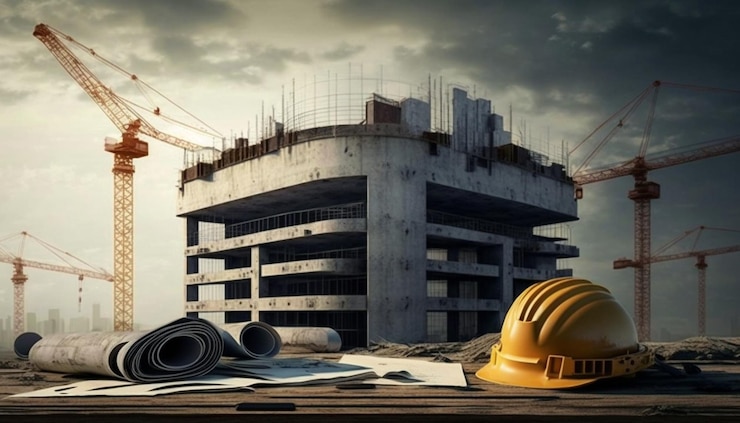
Safety Equipment, PPE, Electrical Safety & Emergency Preparedness in Construction Sites
Construction sites are hazardous environments, thus accidents can happen there at any time. Among all industries, the construction sector has one of the highest rates of fatal injuries, according to the Occupational Safety and Health Administration (OSHA). Therefore, it is crucial to have safety measures in place on civil construction sites to safeguard workers and lower the likelihood of accidents. Following are some crucial safety precautions that civil construction sites ought to take.
- Personal Protective Equipment (PPE)
On construction sites, personal protective equipment (PPE) is crucial for ensuring the security of the workforce. PPE consists of steel-toed boots, high-visibility vests, hard hats, safety glasses, and gloves. Employers are required to supply PPE and make sure that staff members are instructed in how to utilise it properly.
- Fall Protection
The majority of injuries and fatalities on construction sites are caused by falls. On building sites, fall prevention measures like guardrails, safety nets, and personal fall arrest systems (PFAS) ought to be used. Employers must ensure that employees receive enough fall safety training and are using the right tools.
- Hazard Communication
There are many dangers present on construction sites, including chemicals, fumes, and combustible materials. To make sure that personnel are aware of any potential hazards on the job site, precautionary measures such as labelling, Safety Data Sheets (SDS), and employee training should be put in place.
- Electrical Safety
On construction sites, electrical risks are frequent, and electrical shock can be fatal. To avoid electrical dangers, lockout/tagout procedures, GFCI outlets, and other electrical safety precautions should be used.
- Equipment Safety
On construction sites, heavy machinery and equipment are frequently employed, and their safe functioning is essential. Employers are responsible for making sure that personnel are trained in how to use equipment properly and that it is kept in good working order. - Trenching and Excavation Safety
Trenching and excavation projects provide serious risks to employees, such as cave-ins, falls, and hazardous environments. Employers must have safety precautions for trenching and excavations in place, like shoring and slope, and make sure that staff members are trained in their use.
- Emergency Preparedness
Emergency plans should be in place at construction sites to handle accidents, injuries, and other situations. Employers must give employees access to emergency medical services, first aid, and CPR instruction.
Conclusion
To safeguard employees and minimize the possibility of accidents, safety precautions are crucial on civil construction sites. PPE, fall protection, hazard communication, electrical safety, equipment safety, trenching and excavation safety, and emergency preparedness are just a few of the precautions that employers must put into place. To protect their safety, workers must receive training on how to properly use safety gear and procedures. We can reduce accidents and injuries on construction sites by putting safety first, and we can make sure that workers get home safely at the end of the day.







